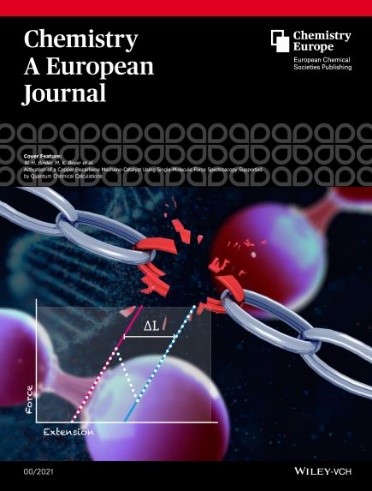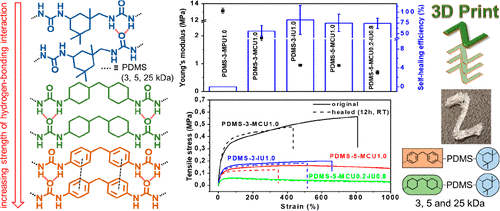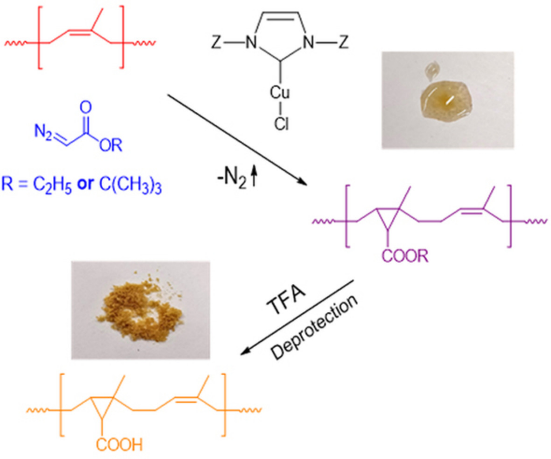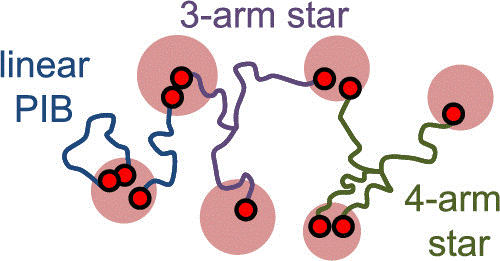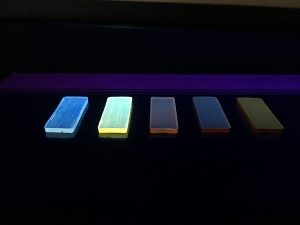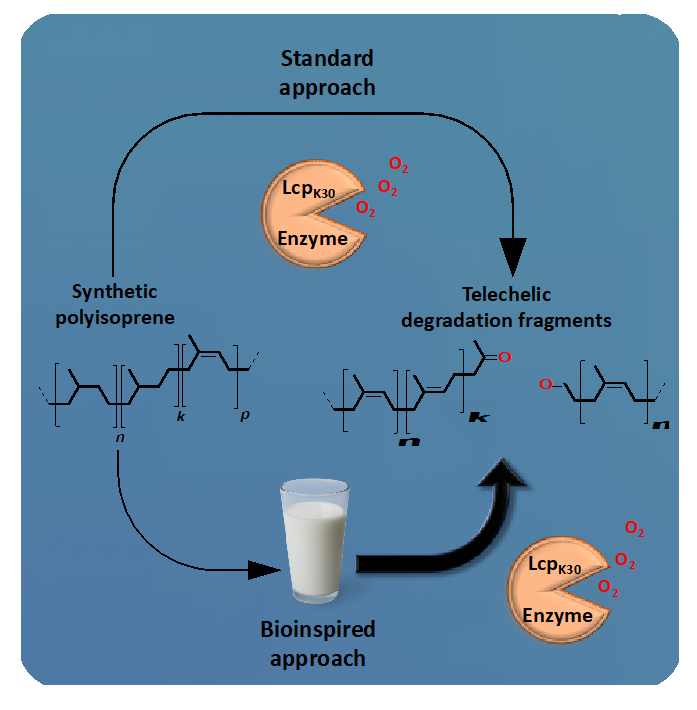Activation of a Copper Biscarbene Mechano-Catalyst Using Single-Molecule Force Spectroscopy Supported by Quantum Chemical Calculations
Sammon, M. S., et al. Chem Eur. J., 2021, DOI:https://doi.org/10.1002/chem.202100555 and https://doi.org/10.1002/chem.202101683
Point break: A latent copper-biscarbene mechanocatalyst becomes active when a ligand is forcefully removed. Pulling with around 2 nN breaks the copper-carbon bond, as measured by single-molecule force spectroscopy. To be able to assign the bond rupture event to the Cu−C bond, mechanophores with two different lengths of safety-line were specifically synthesized for use in this AFM experiment.


